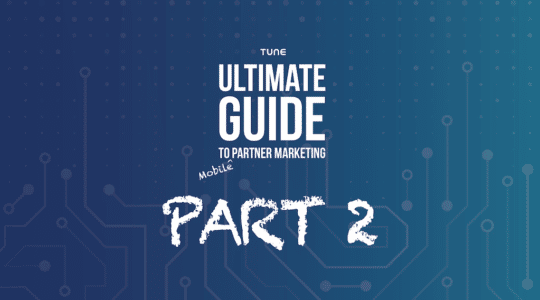Even if you have a positive ROI on campaigns, if you haven’t done some kind of eye tracking study, you are probably wasting someone’s money. Without some kind of analysis of on-page behavior, you have no way of knowing what percentage of visitors are taking some action other than the conversion you hope to achieve.
While this may seem less significant if you are an advertiser relying on publishers to deliver leads and sales on a CPA basis, failing to optimize your landing pages means you are very likely costing your affiliates money in generating those conversions. And if your affiliates are generating more revenue, that means you will be generating more revenue too.
Eye tracking provides plenty of great data about how people engage with elements of your landing page. It helps you identify whether people are actually responding to your on page call to action. Additionally, some types of eye tracking can also help you understand how people are seeing your ad campaigns. Eye tracking comes in three primary forms, which all have their place in making sure both your creative and your landing pages perform at optimal levels.
Eye Tracking Estimation
The SiteTuners team, lead by Tim Ash, are pioneers in predictive eye tracking. Their AttentionWizard product uses an algorithm to analyze pages and estimate where people will look on the page. This is a great way to get a pre-launch estimation for how a new page will perform. Probably the most important thing you can learn from predictive eye tracking is whether or not your page is too busy.
What you don’t actually learn from estimating behavior is how real people will react to your page. While the heat mapping is a remarkably great predictor of how people will respond, with SiteTuners reporting a 75% correlation between the algorithmic approach and eye and mouse tracking approaches, there’s no substitute for actually testing a page against real users.
Using Mouse Actions to Estimate Attention
We use CrazyEgg for eye tracking on HasOffers landing pages. CrazyEgg uses click data to show you where people are looking on a page with heatmaps to help you visualize where people focused the majority of attention. CrazyEgg and some of their competitors, like ClickTale, use a JavaScript added to your page to track mouse events. The mouse events are then extrapolated as gaze behavior.
Everyone in this category of eye tracking cites a 2001 study out of Carnegie Mellon University that found an 84-88 percent correlation between cursor position and gaze direction. Our own data definitely indicates people taking the desired actions on our landing pages, so there’s certainly a strong correlation in our case.
Gaze Tracking in a Lab
When I recently talked to Logan McKinley of Eyetellect about their GazeTracker product, I picked up a few interesting tidbits about eye tracking. One thing that struck me about GazeTracker is a fairly unique approach to eye tracking. In addition to showing you a heat map of where people spent the most time on the page, GazeTracker gives you insight into how people see the page, where they navigate, and how frequently a user revisits elements on a page.
GazeTracker requires a usability lab, complete with eye tracking hardware, so this is a more expensive approach than using either AttentionWizard or CrazyEgg. The higher price also returns more data. By bringing people into a test environment, you also get the opportunity to interview them and determine user intent, which is something you can’t get from seeing where people clicked.
GazeTracker currently works with about 10 different hardware manufacturers and the data is meant to be easy to understand without requiring a degree in statistics to interpret the data.
You can watch my interview with Logan McKinley of Eyetellect below.
Testing Ad Creative with Eye Tracking
Lab testing with live users works for testing landing page layouts just like other eye tracking methodologies, but the thing that really struck me was the idea of using it to test advertising creative.
When you buy retargeting campaigns or something like an Adwords Content Network campaign, you have no control over the content surrounding your ad. So how do you make sure you ad stands out?
By using GazeTracker, you can set up a test using real world content sites with your ads running in their standard advertising locations. From there, GazeTracker follows their eye movements on the page, showing you the path of where they look. You can get a sense for wether or not people are seeing your ad in conduction with the content surrounding the ad.
This allows GazeTracker to provide real world A/B testing for advertising campaigns. For instance, you can setup a test to identify whether a user looks at an ad, how long the user spent on a page before the user looks at the ad, what order the user looks at elements on the page before arriving at the ad, how long they look at the ad, as well as how many times did the user look at the ad before they clicked on it.
This is also something you can’t do with something like CrazyEgg, because you generally won’t have access to a publisher site that allows for placing the CrazyEgg JavaScript on the page.
Do you use eye tracking to optimize your pages? What has it shown you about your landing page optimization?
Author
Becky is the Senior Content Marketing Manager at TUNE. Before TUNE, she handled content strategy and marketing communications at several tech startups in the Bay Area. Becky received her bachelor's degree in English from Wake Forest University. After a decade in San Francisco and Seattle, she has returned home to Charleston, SC, where you can find her strolling through Hampton Park with her pup and enjoying the simple things between adventures with friends and family.




It’s funny how things can happen at the same time… I heard about Crazyegg just the other day on a podcast by Michelle Macphearson called Marketing Con Queso. She mentioned how surprised she was at the results.
The concept triggered my interest and I am definatly going to give crazyegg a try.
I think this will become one of those must-have tools for anyone interested in building or improving the effectiveness of their site.
On a sidenote: I wonder how long it will take for someone to develop a hack for Kinect to utilise it to track the eye movement of web users.
thanks George. Crazyegg has been extremely valuable for us when launching new products and testing new landing pages. There so many little things that can distract or confuse a user.
re: Kinect – I’m pretty sure microsoft is already studying that behavior in optimizing game environments. It seems like Google glass might get the jump on them though, in terms of providing that data to advertisers.
You’ve got a very good point there in regards to Google glass. It’s exciting to think the data that can be collected by that little gadget!